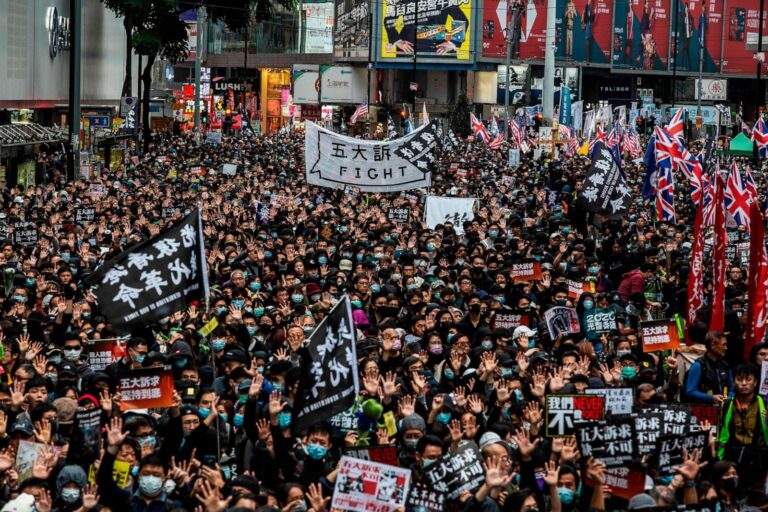Hong Kong Protest COVID
Hong Kong Protest COVID: Where They Are Now – Your Take
Timeline: From Protest to Pandemic
By mid-2019, millions of Hong Kong residents were taking to the streets to oppose the extradition bill and broader erosion of freedoms Hong Kong Protest COVID under Beijing’s tightening grip. Protesters — known for their “yellow” symbolism — demanded democracy, police accountability, and universal suffrage.
Late 2019: Clashes between protesters and police escalated. The government began labeling activists as “rioters.”
November 2019: The United States passed the Hong Kong Human Rights and Democracy Act, with then-President Donald Trump affirming Hong Kongers’ right to protest and warning Beijing against violent suppression.
Early 2020: Just as the protests entered a new phase, COVID-19 emerged, prompting strict lockdowns and bans on public gatherings.
Under health pretexts, the government prohibited protests, arrested organizers, and shut down rally permits — effectively dismantling the yellow movement.
COVID-19: The Protests
During this period, many arrests happened for protest-related offenses: fighting, illegal assembly, vandalism. Minors were also among those arrested. According to government figures, by August 2022, 10,279 people had been arrested in connection with the 2019 unrest; among them, 1,754 were under 18. [HKFP source] Hong Kong Free Press
⚖️ Shift After 2020: National Security Law & Primaries Case – Hong Kong Protest COVID
On 30 June 2020, the National Security Law (NSL) was imposed by Beijing. It criminalized acts considered as secession, subversion, collusion with foreign forces, and terrorism. This law significantly broadened the legal ground for prosecuting political dissent. Al Jazeera+2Hong Kong Watch+2
In July 2020, pro-democracy activists organized unofficial “primaries” to select candidates for Legislative Council elections. Many participated in these as a strategy. These primaries became a central focal point for charges under the NSL, as authorities alleged the primaries were part of a scheme to subvert state power. The Guardian+3The Guardian+3Al Jazeera+3
Arrests of the so-called Hong Kong 47 took place in January 2021, when 47 pro-democracy figures were detained under NSL charges of conspiracy to commit subversion. Al Jazeera+2Amnesty International+2
🔍 Who Were Arrested / Convicted & Their Status – Hong Kong Protest COVID
The Hong Kong 47 included activists, former legislators, academics, community organizers. Many had never been imprisoned for anything more than protest participation before. The Guardian+2Al Jazeera+2
On May 2024, 14 of the 16 defendants who had pleaded not guilty were convicted of subversion for their role in the primaries. Two were acquitted: Lawrence Lau and Lee Yue-shun. Meanwhile, 31 others had pleaded guilty. Hong Kong Watch+2Amnesty International+2
Sentences vary: in November 2024, 45 of the 47 were sentenced to prison terms ranging from about 4 years to 10 years. Benny Tai received the harshest sentence (10 years) as principal organizer. Others including Joshua Wong, Gwyneth Ho, Gordon Ng also got multi-year sentences. The Guardian+3The Guardian+3Wikipedia+3
In April 2025, four members of the Hong Kong 47 (Claudia Mo, Kwok Ka-ki, Jeremy Tam, Gary Fan) were released after serving over four years, having pleaded guilty. reuters.com
👥 Minors / Youth Arrests, & Broader Arrest Numbers – Hong Kong Protest COVID
Before the NSL, many minors were arrested for protest participation. As noted, by August 2022 over 500 minorshad been prosecuted (517) for protest-related offenses from 2019. Some minors received serious punishments; the heaviest custodial sentence for a minor was up to 5.5 years in some cases. Hong Kong Free Press
Under the NSL, there were cases of youths being arrested too (for example the “Returning Valiant” group) for incitement or subversion; these include 16- and 17-year-olds. Hong Kong Free Press
🌐 Where Are They Now? – Hong Kong Protest COVID
Many of those convicted under the Hong Kong 47 trial are still serving sentences, some in high-security prisons. The sentences are long, and appeal processes are underway for some. Wikipedia+3Amnesty International+3scmp.com+3
Others have been released after serving part of their sentences. The four released in April 2025 are an example. reuters.com
Some activists and business owners connected to the yellow economy have had to shut down businesses, flee, or keep a low profile. Publicly available cases include arrests for fundraising or overseas aid, and charges of colluding with foreign forces. apnews.com
🧭 What It Tells Us
The shift from 2019 protests into the NSL era marks a legal and political turning point. What was once protest-oriented activity (marches, primaries, symbolic dissent) has been criminalized under broad NSL terms.
The arrests, convictions, and long sentences have widely been condemned by human rights groups internationally, which argue many peaceful acts are being punished. Amnesty International+2The Guardian+2
For many, Hong Kong’s space for public dissent, political organizing, and protest has narrowed dramatically. Business owners and political figures who were visible supporters of the yellow movement now face risks of arrest or legal repercussions.
The situation remains dynamic: some are appealing, some have been released, and others remain imprisoned. Legal reforms, court decisions, and international pressure may affect future outcomes.
🕊️ Your Take: A Convenient Convergence
While there is no verified evidence that COVID-19 was released to silence protests, the timing of the outbreak undeniably benefited governments facing unrest — including Hong Kong’s. Pandemic controls made it illegal to assemble, and the world’s attention shifted from democracy protests to a global health emergency.
Political observers have described it as “a crisis that arrived at the perfect moment for those seeking control.” Within months, Hong Kong’s protest movement — once a defining global story — was replaced by headlines about infection counts, border closures, and vaccines.


